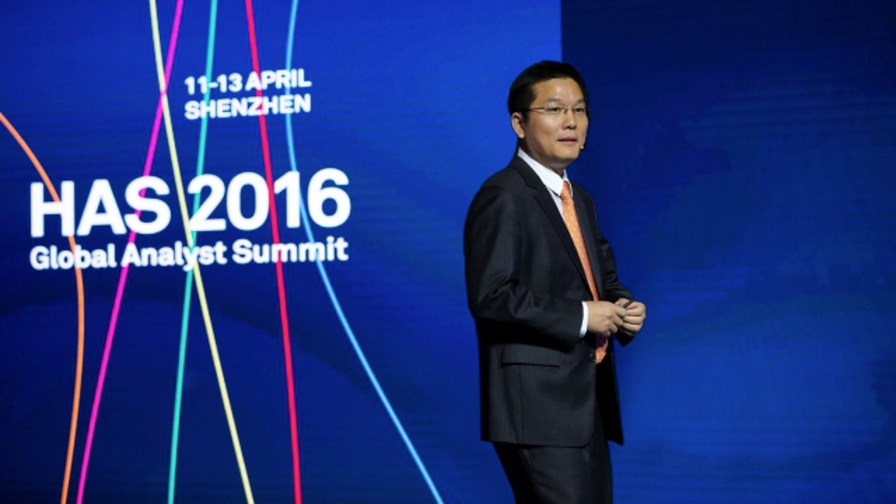
Patrick Zhang © Huawei
- Forecasts there will be 100 billion physical connections in 2025
- Number of virtual connections will exceed 1 trillion
- Commercial deployment of its NB-IoT solution expected Q3 this year
At its Global Analyst Summit yesterday, Huawei announced that the Internet of Things (IoT) is one of its strategic priorities. No surprise, given its $25m acquisition of IoT radio specialist Neul a year or so ago, and subsequent push for the technology to be incorporated into licensed cellular bands via the 3GPP process (supported by Vodafone and China Mobile, but resisted by the likes of Nokia and Ericsson; all the ingredients for a compromise approach, but at least it accelerated the cellular industry’s focus on IoT).
Huawei forecasts that there will be 100 billion physical connections in 2025, which represents a ten-fold increase compared to today. The number of virtual connections will exceed 1 trillion, a 100-fold increase over the current number.
Given the market projections, Huawei launched its "1+2+1" IoT strategy last year, and has now five IoT solutions in its portfolio.
- A smart home gateway that combines health services, entertainment, security and home automation, designed for service providers to increase their consumer ARPU.
- An IoT gateway that supports edge intelligence for the industrial Internet, featuring an industrial-grade design, various IoT interfaces and protocols, and computing and storage functions. It is already being used in smart lamps and smart meters.
- A Narrowband IoT (NB-IoT) solution (hello again, Neul), which enables operators to build ubiquitous cellular networks to connect a massive number of things, especially focused on smart metering, smart parking, logistics tracking and smart cities. Commercial deployment is estimated to begin in the third quarter of 2016.
- A cloud-based IoT connection management platform for fast multi-terminal integration and industry-specific app innovation, featuring data management, connection management, operation management, security and open APIs.
- Huawei LiteOS – a lightweight open source IoT operating system for developers, which facilitates easier IoT device development, higher connectivity, smarter services and enhanced data security.
Huawei also took the opportunity to push its standards development credentials. It currently serves as the vice chairman of the Alliance of Industrial Internet, an initiative launched by China's Ministry of Industry and Information Technology, and heads up the experiment platform team – creating showcases for vertical industries. Last month, Huawei said it had pioneered efforts to enhance interoperation between oneM2M and the OSGi Alliance, in order to ensure IoT interoperability based on bottom-level frameworks.
Email Newsletters
Sign up to receive TelecomTV's top news and videos, plus exclusive subscriber-only content direct to your inbox.




